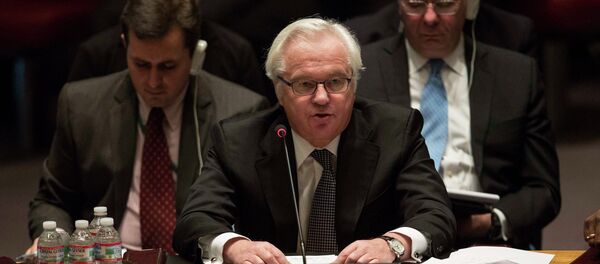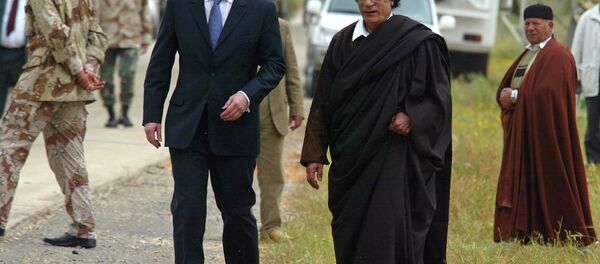The US has long trumpeted itself as the only paragon of virtue and ‘defender of freedom’ in the world, going into overdrive with this message in the years following the Cold War. Millions of people were duped during this time, but their illusions were quickly dispelled after the 1999 War on Yugoslavia.
This tragedy exposed the true face of American ‘diplomacy’ as a duplicitous front for pursuing predetermined geopolitical ends. The war wasn’t so much about a ‘humanitarian intervention’ (the reality surrounding which was grossly exaggerated by the Western media) as it was the establishment of a pro-Western proxy state in the heart of the Southern Balkans.
The War on Yugoslavia also marked a turning point where the US began ramping up its aggression all across Eurasia and perfecting the first actual version of Hybrid Warfare.
Uncle Sam’s Sins
The US did a lot of horrible things during its War on Yugoslavia, but here’s three of the most audacious:
Supporting Terrorism:
UNSC Resolution 1160, which was supported by the US, even condemned the group for its terrorist activity and urged it to immediately halt such actions. Be that as it may, the KLA served an decisive role in destabilizing Serbia, and was thus not only supported by the US throughout the conflict, but its leader Hashim Thaci was even recognized by Washington as the province’s ‘Prime Minister’ afterwards.
Lying to the World:
The US tried to convince the world that the Albanians in Kosovo were experiencing genocide at the hands of the Serbs, but this was nowhere near the reality on the ground. Although some Albanians were certainly killed during their violent uprising against the federal government, Serbs were too, and neither demographic experienced the ‘tens of thousands’ of deaths that the State Department evoked as the US’ excuse for bombing Yugoslavia.
Tens of thousands of more people have died during Mexico’s drug war in recent years, for example, but America’s southern neighbor has yet to experience a ‘humanitarian intervention’.
Bombing Civilian Infrastructure:
BONUS: Bombing China And Getting Away With It:
The US hit the Chinese Embassy in Belgrade (officially recognized as the sovereign territory of the country, as is any state’s embassy abroad) on 7 May, 1999, killing 3 people and injuring about 20 others. One need only imagine the militant response from the Pentagon if the shoe was on the other foot.
The Foreign Policy Toolkit
The War on Yugoslavia represented the first testing ground for the application of the US’ integrated regime change strategy, however sloppily applied. It combined the following characteristics that would later be developed and perfected in forthcoming conflicts:
Unconventional War:
Ultimatum:
The US gave President Milosevic the ultimatum to pull all Yugoslavian police and army forces out of Kosovo Province or face the pulverizing consequences.
Conventional Intervention:
The destabilization came to a dramatic climax when NATO launched its ‘humanitarian intervention’ against Yugoslavia, which ultimately led to its fragmentation and destruction.
Color Revolution:
American intelligence services and Gene Sharp’s teachings organized and directed the Bulldozer Revolution of October 2000, which has since been acknowledged as the first Color Revolution.
Nowadays, the methods above have been perfected and patterned in the following order:
1. Ultimatum:
The US gives an explicit/public or implicit/behind-the-scenes ultimatum to a targeted country or leader. If they refuse and a ‘palace coup’ can’t be pulled off, then the next step is initiated.
2. Color Revolution:
This ‘street coup’ attempt seeks to oust the targeted country’s leadership through the carefully constructed façade of ‘people’s power’, whereby the international media is fed the misleading impression that the majority of a country’s citizens are revolting against their government. Other than the ultimatum or conventional coup, it’s the most cost-effective tool for regime change.
3. Unconventional War:
The third step can be evoked in the midst of the second one before turning into its own full-fledged destabilization when the Color Revolution fails. It capitalizes off of some of the social infrastructure built during the street coup attempt, and then arms the participants and encourages them to commit to terrorism and insurgency in overthrowing their government. Foreign mercenaries can also be involved.
4. Conventional Intervention:
While the previous two steps typically involve a deep level of covert commitment, the final step purposely brings the external destabilizer’s actions into the open by initiating an open war. This is the most expensive form of regime change, but is always clothed in grand ‘humanitarian’ or ‘democratic’ rhetoric to hide its true intent.
Where Are They Now?
Let’s take a look at the most notable example of each stage of the US’ regime change template and see how these countries have since coped with the Hybrid War waged against them:
Steps 1-2: Ukraine
The implicit ultimatum against President Yanukovych was that he had to sign the EU Association Agreement, and when he delayed doing so at the last minute, a Color Revolution was unleashed against him. In some ways, the urban terrorism of EuroMaidan even fulfills the requirements for Step 3.
Nowadays, the country lies in ruin and bankruptcy, and the oligarchs (Poroshenko and Kolomoiskyi) are poised to fight a fratricidal war amongst themselves at the expense of more Ukrainian lives.
Steps 1-3: Syria
As it stands, the most notorious terrorists from every corner of the world have infested the country, slaughtering tens of thousands of innocent people and turning entire cities to rubble in their four-year-long rampage.
Steps 1-4: Libya
Muammar Gaddafi refused to fully integrate his country into the EU-led ‘Union For the Mediterranean’, instead choosing to remain an observer member. Despite having surrendered Libya’s weapons of mass destruction during an earlier ultimatum in 2007, Gaddafi’s reluctance to move forward with Euro-Mediterranean integration made him a marked man.
NATO decided to commence a bombing campaign against the country shortly thereafter under a false ‘humanitarian intervention’ pretext, which consequently destroyed the state’s social and physical infrastructure and turned it into the fearsome terrorist battleground that it is today.
Remember, these above-cited tragedies would not have been possible had it not been for the US’ War on Yugoslavia and the ‘perfection’ of the regime change techniques that were first applied there. It is for this reason that the memory of 24 March should serve as a somber reminder each year of the lethality of American ‘diplomacy’ and the uncountable costs that can be incurred from resisting Washington’s will.







